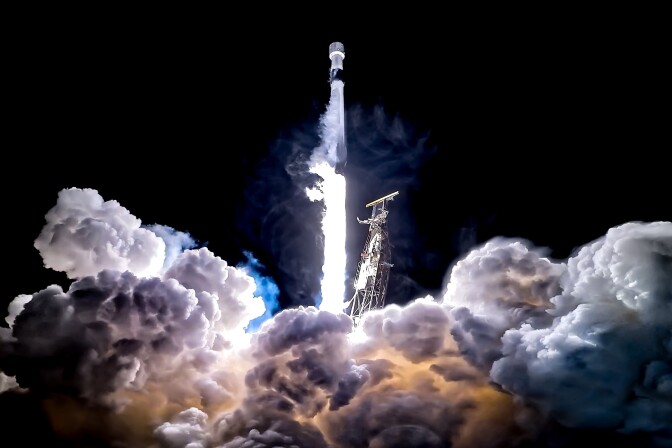It’s only been a month since the federal government shutdown caused the 5.5 million Californians who use CalFresh — the state’s version of the Supplemental Nutrition Assistance Program — to see their payments delayed.
And although payments of SNAP (formerly referred to as food stamps) have restarted, another holiday season is around the corner, putting extra strain on folks who are food insecure in the Bay Area.
One positive development: The CalFresh Fruit and Vegetable EBT Program — a state program offering SNAP recipients up to $60 of free produce each month — has restarted as of November.
The program, which first launched in 2023, is dependent on state-allocated annual funds that are spent until they’re used up, and the 2024 cycle ran out for CalFresh users back in January of this year.
But this year, the program has received an injection of $36 million, which is projected to last until summer 2026.
In previous years, the CalFresh Fruit and Vegetable EBT Program has made “a real, real difference to so many families,” before its funds were used up, said Assemblymember Alex Lee (D-San José), who chairs the state Legislature’s Human Services Committee with oversight of CalFresh policy.
But despite that, he said, “still only a small percentage of all CalFresh-eligible families are using it.”
While only six stores in the Bay Area are participating in the program right now — almost all of them in the South Bay — anyone receiving CalFresh benefits can automatically receive $60 worth of fresh produce each month if they’re able to reach one of these locations.
Keep reading for how the CalFresh Fruit and Vegetable EBT Program works, where it’s available and how to redeem your money in-store.
And if you don’t need this information yourself right now, consider sharing it with someone else who might: “One in five Californians suffer from food insecurity,” Lee said. “So statistically speaking, you are, or you know someone who is struggling with food.”
Can anyone on CalFresh use the CalFresh Fruit and Vegetable EBT Program?
Yes: If you receive any CalFresh (SNAP) benefits, you have automatic access to the CalFresh Fruit and Vegetable EBT Program at participating stores (see below).
You don’t need to apply for anything, as your EBT card itself is your proof of eligibility.
Can I use the CalFresh Fruit and Vegetable EBT Program in any store that accepts EBT?
No: You’ll need to visit one of the specific stores participating in the program.
In the Bay Area, almost all of these stores are in Santa Clara County:
- Santa Fe Foods, 860 White Road, San José
- Arteaga’s Food Center, 204 Willow St., San José
- Arteaga’s Food Center, 1003 Lincoln Ave., San José
- Arteaga’s Food Center, 2620 Alum Rock Ave., San José
- Arteaga’s Food Center, 6906 Automall Pkwy., Gilroy
In Alameda County, you can use the program at:
- Santa Fe Foods, 7356 Thornton Ave., Newark
There are also participating stores in Monterey and Salinas counties, and several in the Los Angeles area. See a full list of grocery stores participating in the CalFresh Fruit and Vegetable EBT Program.
How do I use the CalFresh Fruit and Vegetable EBT Program in the store?
First, make sure you’re in one of the stores participating in the program — mistakes can happen — and that you’ve brought your EBT card with you.
Next, do your shopping as normal, and pick up fresh fruits and vegetables as part of your trip. You don’t have to separate the produce or pay for it in a different transaction.
At the register, tell the cashier you’d like to use your EBT card to pay for your shopping, like you usually would. When it comes to the fresh fruits and vegetables in your cart, you’ll initially see the costs of those particular items come off your EBT funds — but then those funds will be immediately returned, making that produce effectively free at the register.
Another way of seeing it: If your cart amounts to $15 of EBT-eligible food, including $5 of produce, you’ll initially see $15 debited from your card on the screen — but then you’ll see the instant rebate of $5 for your produce, meaning your final receipt will only be $10.
“People don’t have to enroll and do anything different; they don’t have to keep track of some paper coupon or some other card,” said Eli Zigas, executive director of Fullwell: the Bay Area nonprofit advocacy organization partnering with the state to administer the program this year.
“It’s all built into the EBT card at the participating locations,” he said.
And while you can get these instant rebates for up to $60 worth of produce each month, remember: You don’t have to “spend” that $60 up in one transaction. Your EBT will automatically keep track of your produce purchases and just stop issuing the instant rebates once you’ve hit that $60 cap for the month.
Does the amount of produce I can buy using the CalFresh Fruit and Vegetable EBT Program depend on how much I’m receiving in CalFresh benefits?
No: Every CalFresh household can get up to $60 of free fresh fruits and vegetables with their EBT card, regardless of the amount of benefits they receive. It’s a flat amount for all SNAP users in the state.
My EBT balance is at $0 right now. Can I still use the CalFresh Fruit and Vegetable EBT Program?
No: To get the instant rebate on money spent on fresh fruit and vegetables, you’ll first need to actually spend those funds using your EBT card — even though you’ll immediately get the money back onto that card.
If you don’t have any money on your EBT card available, you’ll have to wait until your CalFresh funds are reloaded next month to be able to use the program again. But remember that if your EBT funds are running low, you can still spend a smaller amount — or whatever’s available on your card — on fresh fruit and vegetables and receive the money back instantly, until you’ve maxed out that $60-per-month cap.
Is there a deadline to use the CalFresh Fruit and Vegetable EBT Program?
The $36 million approved in the most recent state budget by the California legislature and Gov. Gavin Newsom for the CalFresh Fruit and Vegetable EBT Program “is three and a half times more money than this program has ever had previously for an annual cycle,” Zigas said.
In previous years, Lee said, the funding would last for different periods “because the program was so wildly successful and oversubscribed that it would run out for a while.”
So what about 2026? “We estimate, based on previous usage, that the program will have funds to run through the summer,” Zigas said.
But after summer arrives, Zigas said, “it’s all going to depend on what the usage is, and whether there’s renewed funding.” So while you still have many months to try the program, you shouldn’t wait too long — not least because each month that passes will bring another $60 for you to spend on produce.
In the wake of the SNAP delays caused by the government shutdown, “I think people have seen recently more than ever before how important CalFresh is and how much people are struggling to put food on the table,” Zigas said. “We would love to see this program not only operate continuously all year long without interruption, but also expand — because it’s a limited number of grocery stores right now offering this program, and it could be so much bigger.”
Is the CalFresh Fruit and Vegetable EBT Program the same as Market Match, and can I use both?
Market Match is a statewide program that distributes funds to farmers’ markets across California, allowing people using CalFresh to “match” an amount of their choosing from their EBT card at the market with tokens to spend at that location — essentially doubling their funds.
Market Match is a separate state program from the CalFresh Fruit and Vegetable EBT Program, but people on CalFresh can use both programs.
Learn more about the Market Match program, and watch KQED’s video on how to use your EBT card at your local market.
Why does the CalFresh Fruit and Vegetable EBT Program focus on fresh produce specifically?
The program’s focus on fresh fruit and vegetables “is recognizing that CalFresh benefits, as good as they are, are often insufficient for people to afford the food that they want for their families,” Zigas said.
This is especially true of fresh fruits and vegetables, he said, “which are harder to justify buying when you have less income because they’re not shelf stable, and you don’t know if your kids are necessarily going to like them.
“People would like to buy fresh fruits and vegetables, and often just don’t feel like they can make that choice — or afford it,” he said.








